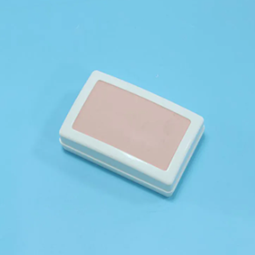ADA MED SUPPLY LIMITED
Phone:+86 19937901373
Tel:+86-0379-65160607
Email:adaanatomy@adaanatomy.com

Article tag: Acupuncture Training Model Medical Acupuncture Model BIX-ZC-C

Acupuncture and moxibustion is one of the core treatment methods of traditional Chinese medicine. How to improve students' practical ability and theoretical knowledge in the course of education and training is always an important subject in traditional Chinese medicine education. As an effective teaching tool, the applicability and influence of acupuncture and moxibustion training model are particularly noteworthy among students at different learning stages. This paper will discuss the applicability of acupuncture training model in different learning stages, and analyze its impact on students combined with clinical significance and relevant data.
Application of acupuncture training model for beginners
For beginners, the acupuncture training model provides an intuitive and systematic way to learn. In the initial learning stage, students are faced with a lot of theoretical knowledge learning and mastering acupuncture skills, the most critical of which is the correct positioning of acupoints and the proficiency of acupuncture techniques. The acupuncture training model can help students to practice in a non-clinical environment and reduce their operational risks by simulating the position of various acupoints in the human body.
According to a study on TCM acupuncture education, more than 70 percent of beginners said that the acupuncture training model greatly reduced their learning difficulty and helped them quickly master the location of acupoints and acupuncture operation skills. The data also showed that students who used the acupuncture training model had an error rate of about 25 percent lower in actual clinical training. This shows that the acupuncture training model can provide beginners with the necessary theoretical and operational foundations to accelerate their learning process.
Value of acupuncture training model in advanced students
With the deepening of learning, the knowledge of acupuncture students continues to expand, acupuncture skills tend to be complicated. In the advanced stage, students not only need to master more location of acupoints, but also need to understand the role and clinical application of different acupoints. Therefore, the function of acupuncture training model is not only limited to the basic location of acupoints, but also needs to have more clinical simulation functions to help students carry out more advanced operation training.
For example, the simulated skin and anatomy in the acupuncture training model can provide students with a more realistic operating experience. For advanced students, this model can help them practice acupuncture depth, acupuncture Angle and treatment options for different diseases in a simulated environment. According to the opinions of experts, advanced students can improve the accuracy and efficacy of acupuncture treatment through repeated practice of acupuncture training model.
Clinical significance and clinical simulation for advanced students
The clinical significance of acupuncture training model, especially in the study of advanced students, is particularly prominent. Students at the clinical stage usually have a solid theoretical foundation and initial operational skills, and then they need to undergo in-depth training in more complex clinical Settings. Through the use of more advanced acupuncture training models, students can simulate different clinical scenarios, such as the treatment of specific diseases, emergency management of emergency situations, etc.
The latest data show that nearly 80% of students who used the advanced acupuncture training model said that through this simulation training, they were able to become more familiar with the complexity of clinical treatment. For example, the acupuncture training model can simulate patients with different body types and different health states to help students develop personalized treatment plans, thereby improving their clinical practice ability.
Summary
The acupuncture training model has a wide range of applicability and can provide tailored teaching support according to the learning stage of the student. In the initial learning stage, the model greatly improves the learning efficiency by helping students master the basic acupoint positioning and acupuncture skills; In the advanced stage, the model helps students to practice more complex operations and deepen their understanding of clinical applications. In the clinical stage, the clinical simulation function of the model provides students with a more realistic operating environment and improves their clinical treatment ability. Both data and expert opinions show that acupuncture training model plays an irreplaceable role in students at different learning stages, and will continue to improve and innovate with the development of technology to promote the development of acupuncture education to a higher level.